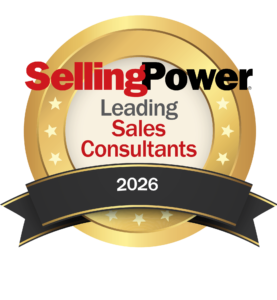Creating a Winning Competitive Strategy

Nearly every salesperson competes. However, almost no one develops a competitive strategy. In today’s market, competition is at an all-time high. Demanding Procurement organizations and aggressive competitors have driven a hyper price-focused competitive environment. In most cases, if you ask a sales or relationship management professional to describe their competitive strategy, you will hear they are being diligent and working hard. While being diligent and hardworking is both admirable and necessary, it is not a strategy. People doing this are simply competing (and hoping for success). This is the position in which most sales professionals find themselves – working hard but lacking a real competitive strategy designed to help them differentiate from competition and win.
The Problem with Having No Strategy in Sales
Not having a defined strategy puts your salespeople in the position of being reactive. Without strategy, it is easy to be influenced by the fear of a minor vulnerability related to solutions or pricing. This reaction drives many sales professionals to eliminate the vulnerability by lowering pricing or attempting to match a competitor’s solution spec. Your position is weakened when in a reactionary and defensive place, and you are far less likely to succeed.
Head-to-Head Competition
Most often, people in sales and relationship management are driven to head-to-head competitive battles. Competitors who are willing and able to lower their margins love to switch the fight from solutions and value to price. Procurement departments gravitate to this conversation as well – in fact, their assessment grids often seek to boil things down to like comparisons and price. How many times have you heard Procurement talk about leveling the playing field? There is no such thing! Someone in the competition always has an advantage – and too often it is not us. For example:
- Incumbents who are currently working with the customer to deliver their service usually have a huge access advantage. “Status quo bias” is real, and switching costs can weigh against anyone trying to knock off an incumbent.
- Low-cost “me too” providers can create confusion on the differentiation between similar solutions/suppliers and sway focus to price.
- Disruptive new players may enter the market with a unique competitive edge.
- In-house operations can have any of these advantages, and more!
Head-to head competition is not good for most value-leading organizations, as it’s all too easy for value to be commoditized and the conversation turned toward lowering price.
Additional Competitive Strategies
What should your team do when faced with head-to head competition and you cannot win on price? Consider changing the rules of engagement.
Here are four strategies to consider when trying to change the rules in a head-to-head competitive battle:
1. Change the decision maker: Too often, sales professionals settle for interacting with only the evaluation team. Do your homework and identify who is really making the decision. What is the department where your solution will be deployed? Which executive leads that department and has the most to gain or lose? Identify the true senior-level decision maker and learn what is important to them. Then, leverage your network to schedule an opportunity to deliver your value message to the decision maker. If you find a way to work with the line executive (and possibly Procurement too) while your competitor interfaces solely with Procurement, that changes the game.
2. Change the playing field: Develop a coach – or a network of coaches – who want you to win because they win when you do. Leverage these relationships to gain critical insight and access to key players, including the decision maker.
3. Change your understanding: Do your homework to develop in-depth understanding of key competitive fronts.
- The customer: Most salespeople research the customer’s needs/requirements for your solution. The best salespeople also seek to understand the customer’s business and strategic direction.
- The competition: What is the state of the competition’s business? What are their business issues? What are their strengths and weaknesses? What are their tendencies? While this may sound fundamental, understanding the competition has become a lost art in sales.
- Yourself: It is critically important to authentically assess yourself and your company. What do you do well and what are your weaknesses? This understanding allows you to define your competitive advantage and identify vulnerability.
4. Change the message: Leverage your research and present differently than your competitors. Instead of simply using the customer’s presentation template or falling into the typical trappings of pitching your solution, do something different. Yes, you should give your customers the information they are looking for – but do it in a way that highlights and leverages your competitive advantage.
Is there risk to changing the rules? Possibly. Could you be eliminated by Procurement for not following the rules, or have a vulnerability exposed by the competition? It rarely happens, but it’s possible. Only you can determine your odds of winning by following the rules versus changing them, and only you know if the risk is worth it. On the other hand, we are typically at our best when playing our own game, not someone else’s.
The Chinese military strategist Sun Tzu states,
“In war, the victorious strategist only seeks battle after the victory has been won – whereas he who is destined for defeat first fights and afterwards looks for victory.”
Doing your homework, developing your strategy, and changing the rules allows you to compete with intention and purpose rather than reacting to the competition. Confidence is gained from having a strategy. Perhaps even more important than being guided with purpose is the sense of feeling proactive – like you are in control of your own actions and choices – and being empowered rather than victimized.
Nearly every salesperson competes; however, almost no one develops a competitive strategy. Your team can be different. They can research, plan, and act with purposeful intention guided by strategy. They can stand apart. They can attack from a position of strength in your value rather than defend from a position of insecurity in minor vulnerabilities. And, with a sound competitive strategy, they can accelerate your odds of success!
Tony Ennis is principal and vice president of Business Development for IMPAX Sales Performance, a global sales performance acceleration company focused on helping value-leading B2B organizations increase success and drive results. Please visit www.impaxcorp.com for more information.
Get our Enewsletter
Get the latest sales leadership insight, strategies, and best practices delivered weekly to your inbox.
Sign up NOW →